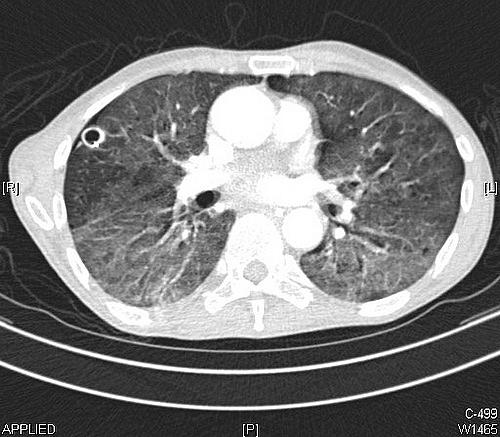Lung cancer carries unfair stigma that other cancers don’t

The pink frosting on the stack of brownies at the hospital coffee shop was another reminder that October was breast cancer awareness month. Pink was everywhere. I wondered aloud to the barista what color the brownies would be for November, the month designated for lung cancer victims. She shrugged, and said nothing except that I owed a couple dollars for my coffee.
About.com says the official color for lung cancer is pearl, clear, or white.
But I think the color of Lung Cancer Awareness month is pretty much a drab gray because lung cancer is so depressing. It kills more people in the United States than any other type of cancer, including breast cancer. The prognosis for lung cancer, the type I suffer from, is often grim. And to make matters worse, it lacks what I have come to think of as cancer chic -- that hot pink color that festoons everything in October from NFL uniforms to the pink lights adorning the tops of Chicago’s high rise buildings.
Lung cancer is responsible for more than a quarter for all cancer deaths, and it kills about twice as many women as breast cancer, and almost three times as many men as prostate cancer.
The U.S. Centers for Disease Control and Prevention reported that 201,144 Americans were diagnosed with lung cancer in 2010, the latest year for which numbers are available. All told, 158,248 people died from the disease that year. Slightly more men than women are diagnosed and die from lung cancer each year.
Lung cancer is the most virulent killer, but there is a big difference between being diagnosed with lung cancer and, say, cancers of the breast, skin or prostate. People who contract those cancers do not uniformly face the inevitable question, “Did you smoke?”
Put another way, the unspoken question, the stigma that attaches to lung cancer, is, “Isn’t this your own fault?”
For me, acknowledging my smoking history -- I smoked for 20 years before quitting for good 15 years ago -- brings on tremendous guilt. Over time, I have learned that, based on medical studies, my long-ago smoking habit probably was no more a cause than genetics that contributed to my lung cancer. But there is no shaking these feelings of guilt.
I sometimes even consider lying when asked the question -- to claim to be among the 10-15 percent of lung cancer victims who have never smoked cigarettes. I want to point out that nearly two-thirds of all new lung cancer cases strike non-smokers -- people who have either never smoked or who gave up the habit, often decades ago.
But I don’t lie. I admit to being a former smoker.
The curse of smoking and the fact that lung cancer doesn’t have a good color for November are both bad enough.
The real tragedy is that this disparity has translated into a gross inequality in research funding for lung cancer versus breast cancer, says Dr. J. Leonard Lichtenfeld, Deputy Chief Medical Officer for the American Cancer Society.
According to the National Cancer Institute, $314. 6 million was spent on lung cancer research in 2012. Breast cancer was the target of $602.7 million in research spending, nearly twice as much.
“There is no question that breast cancer awareness has become a marketing phenomenon,” says Lichtenfeld. “Compare that to lung cancer -- we don’t see anywhere near that level of activity.”
Lichtenfeld says advocacy is particularly important because of the implied stigma attached to lung cancer and because the disease needs to be kept front and center to attract research funding for research.
He has no problem with the American Cancer Society’s historic focus on warning people about the harm caused by smoking. “That’s not a bad thing, because that has saved many lives,” he says.
“But what we have not done as a public matter is we have not been as aware and understanding of the (lung cancer) patients themselves. We have focused on tobacco cessation … that’s necessary, but not sufficient. Progress is slow.”
In my view, November needs a new color by which to highlight its designation as Lung Cancer Awareness month. We ought to color November blue, and treat all cancer victims under the big blue sky with equal compassion and dignity.
This post originally ran in the "Cancer In Context" blog and has been reposted with permission from Thompson-Reuters.
Image by Pulmonary Pathology via Flickr

